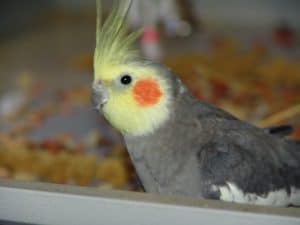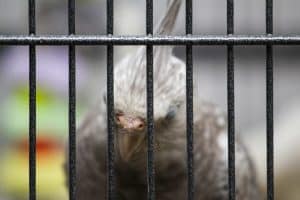Setting up a comfortable and safe environment for your cockatiel starts with knowing what to put in the cage tray of your cockatiel. This base layer not only keeps the cage clean but also impacts your feathered friend’s health. You might wonder if there’s more to it than just laying down newspaper or paper towels.
Choosing the right materials can reduce odors, simplify cleaning, and ensure your cockatiel isn’t exposed to harmful substances. From absorbent options to easy-to-clean solutions, the choices are plentiful but require careful consideration. Let’s dive into how you can create a hygienic and comfortable home for your cockatiel, ensuring they thrive in their environment.
Essential Items for Your Cockatiel’s Cage Tray
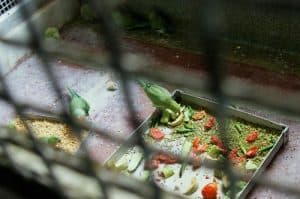
Ensuring that your cockatiel’s living space is comfortable and hygienic starts with selecting the right items for the cage tray. Here, you’ll learn about the optimal substrates and hygiene supplies that are essential for maintaining a healthy environment for your pet bird.
Substrate Options for Comfort and Cleanliness
Choosing the correct substrate for the cage tray is crucial for your cockatiel’s health and cleanliness. Paper-based substrates, such as newspaper, butcher paper, or paper towels, are popular as they are non-toxic and easy to replace. These materials do not create dust and are excellent for monitoring your bird’s droppings, which is essential for keeping track of their health. Alternatively, commercially available cage liners designed specifically for bird cages offer a convenient option, as they’re cut to fit and highly absorbent.
For those preferring a more natural substrate, aspen wood shavings can be an excellent choice—ensure they’re free from aromatic oils, which can be harmful to your cockatiel. Avoid using corncob bedding or sand, as these can harbor bacteria and mold if not changed frequently and can be dusty, potentially leading to respiratory issues.
Essential Hygiene Supplies for the Tray
Maintaining the cleanliness of your cockatiel’s tray is paramount for preventing health issues. Daily removal of soiled substrate and waste is necessary, and using a small scoop can help with spot-cleaning throughout the day. For a thorough weekly clean, equip yourself with brushes and sponges that are dedicated solely to your bird’s cage. Use a non-toxic cleaner or a diluted bleach solution (one part bleach to nine parts water) to disinfect the tray, rinsing it thoroughly with hot water to remove any chemical residue.
Additionally, incorporate disposable gloves and paper towels for handling waste to maintain hygiene. Ensuring that these items are at hand can simplify the cleaning process, keeping your bird’s environment fresh and conducive to health.
Maintaining a Healthy Cage Environment
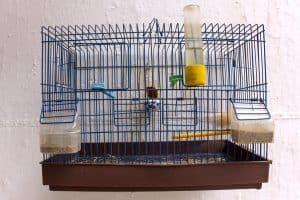
Caring for your cockatiel involves more than just providing food and affection; maintaining a clean and safe cage environment is equally crucial. Ensuring that your cockatiel’s cage remains healthy will significantly affect their overall well-being and happiness.
Regular Cleaning Routine
Establishing a regular cleaning schedule for your cockatiel’s cage is essential. You should remove waste and leftover food from the cage daily to prevent bacteria and mold growth. At least once a week, remove and replace the cage liner, whether you’re using paper towels, butcher paper, or other safe substrates. Using hot water and a non-toxic cleaner, thoroughly wash the cage, bird perches, and food and water dishes. If reusable items show signs of wear or are too soiled, consider replacing them to maintain a hygienic environment for your pet birds.
Spotting Health Hazards in the Tray Area
Monitoring the cage tray frequently can help you spot potential health hazards before they harm your cockatiel. Look for changes in the quantity, color, or consistency of droppings, which might indicate health issues.
Also, be on the lookout for sharp objects or broken toys that could injure your bird. Ensure there are no toxic fumes or residues in the area, as even small amounts can be detrimental to small birds like cockatiels. Regular inspection and immediate action if something seems amiss will keep your cockatiel safe and healthy.
Recommended Accessories for the Cage Tray
Creating a stimulating environment in your cockatiel’s cage tray is essential for its health and happiness. Following the advice on maintaining a clean and safe tray environment, you can now explore accessories that enhance your bird’s lifestyle directly from within its cage tray.
Functional Items for Feeding and Drinking
Ensuring your cockatiel has access to fresh water and food throughout the day is paramount. Install sturdy food and water dishes specifically designed for small birds. Ceramic or stainless steel dishes are ideal as they are durable, easy to clean, and difficult for your cockatiel to tip over. Positioning these dishes in a stable area of the cage tray minimizes spills and keeps the feeding area neat. Additionally, consider a foraging tray which encourages natural feeding behaviors and keeps your cockatiel engaged.
Safe Toys and Entertainment Options
Toys are not just for fun; they are crucial for your cockatiel’s cognitive development and emotional well-being. Introduce a variety of bird-safe toys into the cage tray, such as hanging bells, chewable wood blocks, and foraging toys that stimulate your pet’s mind and satisfy its instinct to search for food. Rotate these toys regularly to keep your bird entertained and prevent boredom-related behaviors like feather plucking. Ensure all toys are made from non-toxic materials and are appropriately sized to avoid any risk of injury or ingestion.
Tips for Setup and Maintenance
Maintaining the ideal setup and carrying out regular maintenance of your cockatiel’s cage can significantly contribute to your bird’s health and happiness. This section offers practical advice on the placement and security of the cage tray, as well as tips for routine check-ups and replacement.
Proper Placement and Securing of the Tray
Ensure the cage tray is correctly positioned beneath the grate to catch debris, droppings, and food remnants. Secure the tray in place to prevent any gaps that could potentially allow your cockatiel to escape or trapped beneath it. If your cage design permits, lock the tray to deter your bird from tampering with it if they become overly curious or active. Maintaining a stable and secure tray foundation not only simplifies cleaning but also ensures that the environment remains safe for your pet.
Routine Check-up and Replacement Tips
Inspect the cage tray and its contents daily, focusing on signs of wear and tear or contamination that could pose health risks. Replace liners like paper towels or butcher paper daily to prevent the build-up of harmful bacteria and odors. Monthly, evaluate the need to thoroughly clean or replace more durable components like wood chips or corncob bedding, ensuring they are free of mold and excessive waste.
Using a bleach solution, thoroughly clean the tray every month; afterwards, rinse it several times with hot water to eliminate any residual bleach that could harm your bird. Remember, a consistently clean habitat is vital for preventing diseases and keeping your cockatiel in high spirits.
Final Thoughts: What to Put in the Cage Tray of Your Cockatiel
Ensuring your cockatiel’s health and happiness starts with what you put in their cage tray. By choosing the right materials and maintaining a clean, engaging environment you’re setting the stage for your feathered friend’s well-being.
Remember the importance of non-toxic substrates and the role of accessories in keeping your cockatiel entertained and active. Regular updates to their space and vigilant cleaning are key to a healthy bird. Keep these tips in mind and your cockatiel will thrive in a safe supportive home.
Enhancing Your Cockatiel’s Cage Tray Experience
Beyond the basics of substrates and cleaning, enhancing your cockatiel’s cage tray experience involves adding thoughtful touches that cater to their natural instincts and preferences. Creating an environment that stimulates and entertains your bird can contribute significantly to their overall well-being.
Incorporating Natural Elements
Adding natural elements to the cage tray can mimic your cockatiel’s natural habitat and enrich their daily life. Consider placing a few small branches or non-toxic plants in or around the tray. Branches can provide a perch and encourage foraging behavior, while certain bird-safe plants can add a touch of greenery to their environment. Ensure that any natural materials used are free of pesticides and safe for your bird.
Providing Enrichment Activities
Enrichment activities are essential for keeping your cockatiel mentally and physically stimulated. You can include small, interactive toys like puzzle feeders that challenge your bird to work for their food. This not only keeps them engaged but also promotes healthy activity levels. Chew toys made of natural materials like untreated wood or rope can help maintain your cockatiel’s beak health while providing entertainment.
Monitoring Behavior and Adjusting
Pay attention to how your cockatiel interacts with the cage tray setup. If you notice any signs of boredom or stress, it might be time to switch up the toys or substrates. Birds can be sensitive to changes, so gradual adjustments can help your cockatiel adapt comfortably.
Seasonal Considerations
Seasonal changes can also affect your cockatiel’s needs. In warmer months, ensure that the cage tray remains cool and dry, and in cooler weather, consider adding extra bedding to keep your bird warm. Always monitor the environment and make adjustments as needed to maintain a comfortable living space for your feathered friend.
Other suggested articles:
How to Hold a Cockatiel? (6 steps)
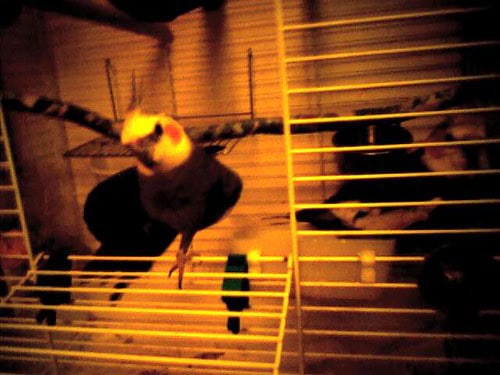
![Jusney Bird Rope Perches, 21 inches [1 Pack]](https://m.media-amazon.com/images/I/71dtZeE3PCL._AC_SL1500_.jpg)

